Preparing for Propagation—URCs
A couple newsletters ago, I kicked off multiple weeks of video and podcast content related to propagation. Whether you’re starting from seed, plugs, URCs, liners, TC, bareroot, air layers, canes, corms or stumps, it’s always a good plan to refresh on the basics and learn new techniques. We all know the first stages of prop can make or break a crop. This is especially critical when producing annuals from unrooted cuttings.

Your friendly-neighborhood Tech On Demand team spends a lot of time working with growers who produce liners and finished plants from URCs, and some of them crank out millions of them. Whether you’re growing rooted cuttings for your own production or to wholesale to other greenhouses, here’s an AWESOME SERIES of videos taking you from the first stages until your young plants are rooted out.
To help make this content more digestible, the full presentation is broken down into 13 individual videos, each about five minutes long. Check them out individually as you move through the stages of production or binge watch them all:
-
SANITATION & FACILITY PREP
-
RECEIVING & STORAGE
-
PROPER STORAGE = HAPPY CUTTINGS
-
STICKING PRIORITIES
-
IMPROPER STORAGE RISKS
-
SENSOR-BASED MISTING + VPD
-
MANUFACTURING
-
STAGE ONE
-
STAGE TWO
-
STAGE THREE
-
STAGE FOUR
-
HEIGHT CONTROL
-
LEDs IN URC PRODUCTION
We try to also release tutorials like these in audio format via the Tech On Demand Podcast, brought to you by GrowerTalks. You can find the pod on Spotify, Apple Podcasts and just about any other app. Definitely subscribe—so you never miss an episode. Take some time to jump back in the archives for more than 100 episodes covering a wide range of topics for greenhouse professionals.
TECH ON DEMAND ON SPOTIFY
TECH ON DEMAND ON APPLE PODCASTS

Josh’s Guest Tip of the Week: Stem & Root Diseases
You’re used to reading tech tips from Nick Flax every week, but sometimes another member of the Ball Seed tech teams jumps in to cover a specific topic. That’s the case this week, as Dr. Josh Henry joins us to share some plant health diagnostic information specific to root and stem diseases you might encounter in production. I’m breaking this into two parts: first, tips for recognizing symptoms, and then a bit of a deeper dive into “the why.”
PROBLEM: Stem and root diseases are common issues occurring in a wide variety of plants and production systems. There are numerous fungal, bacterial and viral pathogens that cause disease in roots, crowns and stems, many of which cause similar symptoms that can be challenging to distinguish from each other.
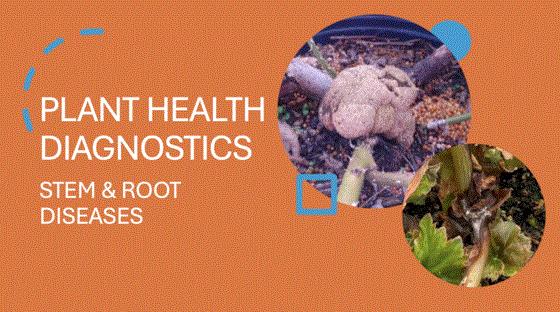
JOSH’S TIP(S): While pathogen identification can be difficult, recognizing disease symptoms can help inform control measures from a cultural, biological and chemical standpoint.
Tip #1: Describe Symptom Appearance & Distribution
Disease symptoms tend to appear sporadically throughout a crop with varying levels of severity. Ask yourself, are symptoms affecting a specific variety or species? (NOTE: Always remember to look at the roots.)
Some common signs and symptoms include:
-
Rot—Browning, discoloration and dead tissue
-
Gall—“Tumor-like” growths and deformation
-
Canker—Necrotic (dead) spots or lesions
-
Sporulation—Reproductive fungal growth
-
Mycelium—Web-like fungal growth
-
Sclerotia—Hard fungal resting structures
Tip #2: Consider the Environment & Vectors
Three things—the pathogen, a susceptible host and a conducive environment—are required to cause disease. And three things—temperature, humidity and substrate moisture—are key factors for disease development. For example, Pythium and Phytophthora root rots spread under wet conditions, while Thielaviopsis infection is favored with high substrate pH. Remember, diseases can also spread from tools, pests and splashing water, while damaged or weakened tissues are routes for infection.
Tip #3: Confirm with Lab Testing
Keep up with training for yourself and your production team so you all know and recognize common diseases of your crops. Utilize effective chemical rotations for preventative control of root and crown rots and use appropriate cultural controls to provide an unfavorable environment for infection. As always, if in doubt, send samples for lab-based diagnostics because it’s always best to confirm the pathogen so you can utilize the proper treatment and control measures.

Josh on Stem & Root Diseases (Continued …)
Following up on the tips above, it’s always good to dig in a little bit and understand exactly why problem occur so you can better mitigate or control them. Let’s take a look at these diseases one at a time.
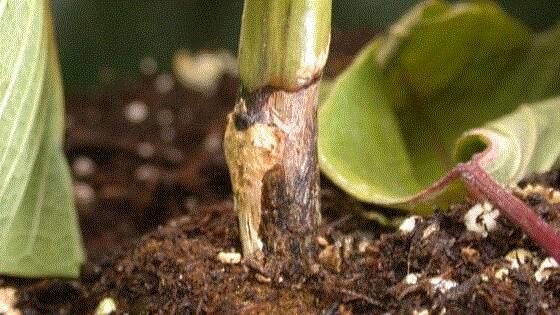
Root and Stem Diseases. Some of the main diseases observed on stems and roots include rot, galls, wilt and cankers. Many of these diseases are caused by fungal pathogens or the closely related oomycetes, but some are caused by bacterial pathogens. Maintaining good cultural practices is essential for limiting initial infection and can make it easier to spot diseased plants among a crop of otherwise healthy plants. While similar symptoms may be caused by an array of pathogens, maintaining a strategic and comprehensive chemical rotation can help to prevent stem and root diseases from becoming an issue.
Root Diseases. Root rot is one of the most common diseases observed in commercial floriculture production affecting a wide range of crops. Root rot diseases are typically caused by a fungus such as Thielaviopsis, Rhizoctonia or Fusarium, or an oomycete like Pythium or Phytophthora. Generally, root diseases cause brown or discolored, mushy roots, stunting, and wilting, even when the substrate is wet. Symptoms on the roots can vary based on the pathogen. For example, Pythium often causes the outer layer of the root to slough off while Thielaviopsis causes a distinct black coloration—hence its name “black root rot.”
Crown Diseases. Galls and rot are common diseases that occur at the crown, or the base of the stem. Crown gall is a common disease caused by the bacterial pathogen Agrobacterium tumefaciens. There are no cures or chemical control measures. The best defense is good sanitation and quick removal and destruction of the infected plant material. Some pathogens that cause root rot like Pythium and Phytophthora can also cause crown rot. Fusarium and Rhizoctonia can cause distinct symptoms above the substrate such as white or pink fungal growth on stems from Fusarium or web-like mycelium and cankers on the lower stem and leaves with Rhizoctonia. Sclerotium rolfsii, the pathogen causing southern blight, produces symptoms of root and crown rot accompanied by white fungal growth and sclerotia near the base of the stem.
Stem Diseases. Stems can also develop galls, rot, vascular wilt and stem cankers. Leafy gall, caused by the bacterial pathogen Rhodococcus fasciansis, is a disease that causes masses of shoots to develop in dense clusters. Like with Agrobacterium, there are no cures or chemical control measures. Fungal and bacterial pathogens may cause dead spots or cankers to form on the stem, often infecting though a wound left by mechanical damage or pest feeding. Vascular wilts are caused by fungal or bacterial pathogens that infect the xylem or phloem, causing sections of the plant to die off. Fusarium and Verticillium are two common fungi that cause vascular wilts. Dissecting the stem will reveal discoloration in the vascular system. Sclerotinia is a soilborne pathogen that produces white, cottony growth on the stem and hard, black sclerotia in or on the surface of the stem.
Pathogen Testing and Corrective Measures. Testing is the best way to correctly identify and treat diseases when symptoms are observed. While ImmunoStrips are available for in-house testing, these tests are typically intended for pathogens causing foliar diseases. Diagnostic labs such as the labs at Ball Helix can perform tests to determine the specific pathogen, which can help you decide the appropriate corrective actions to take. Industry technical experts and university extension services can also aid with diagnostics.
If you like this style of technical tips from Josh—sharing tactical content, as well as a deeper dive to help with training—YOU CAN FIND MORE ON THE BALL SEED WEBSITE.

NEW VIDEO & PODCAST: Cut Flower Dahlias from URC with Dr. Alicain Carlson
Syngenta Flowers’ Dr. Alicain Carlson joined me recently for a video discussing key components of successful cut flower dahlia programs when starting from unrooted cuttings.
Admittedly, I have never dug dahlia tubers and stored them to replant, but it sounds like a dirty job that comes with plenty of risk. Yes, the color range and assortment from tubers is wide and beautiful, but starting your cut flower dahlias from URCs allows you to take advantage of a bunch of benefits that come from this form of production.
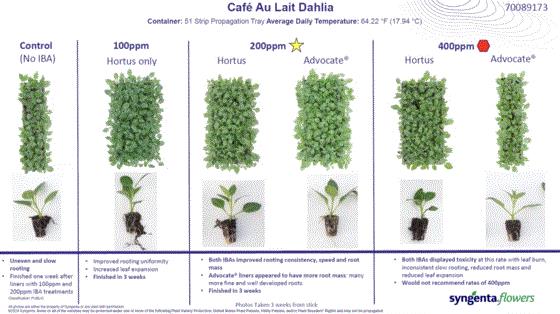
When buying from a reputable supplier, these inputs are virus and disease free with excellent uniformity across the crop, as well as simplified scheduling and potential cost savings. IN THE VIDEO, Dr. Carlson dives into the pros and cons of starting from URCs, and she highlights some key varieties in the Syngenta Flowers portfolio before moving into culture and production strategies.
Here is what you’ll learn throughout the discussion:
-
Propagation tips for rooting into 50- or 105-cell trays
-
Importance of long-day lighting in prop
-
Rooting hormone trials and recommendations
-
Why NOT to pinch young plants
-
Winter dahlia production strategies
-
Protocols for maximizing flower quality and “double-ness”
-
Trial results from temperature research specific to dahlias
-
How and when to perform a “hard pinch” after transplant
-
Irrigation and nutrition in the field
-
Pest and disease management in finished crops
-
Postharvest care of dahlias
If you prefer to listen to the information on the go, here’s a link to the Tech On Demand podcast version on SPOTIFY and APPLE PODCASTS.

Pesticides and Beneficials … There’s an app for that!
The Tech On Demand team was chatting yesterday about how useful the SIDE EFFECTS APP from Biobest is when working with growers on pesticide recommendations when biological IPM is also in play. So, I figured I’d share it with you.
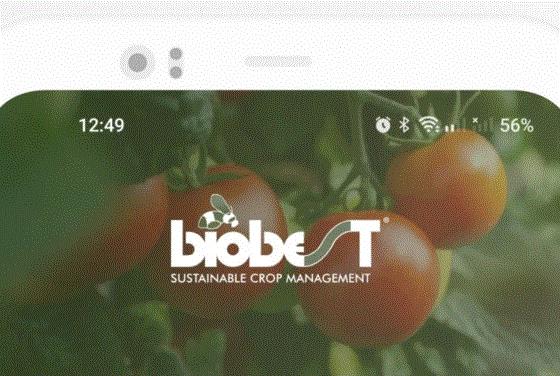 The Side Effects app is a mobile guide available for iPhone and Android devices that shares information on potential side effects of different chemistries on beneficial organisms. When making decisions on products to apply, it’s worth checking to app so you’re aware of any unplanned impacts. All you do is select an active ingredient and a beneficial from drop down menus and the potential side effects are listed. It’s pretty simple and you can use it in the greenhouse when you’re planning applications.
The Side Effects app is a mobile guide available for iPhone and Android devices that shares information on potential side effects of different chemistries on beneficial organisms. When making decisions on products to apply, it’s worth checking to app so you’re aware of any unplanned impacts. All you do is select an active ingredient and a beneficial from drop down menus and the potential side effects are listed. It’s pretty simple and you can use it in the greenhouse when you’re planning applications.
Whitefly on Poinsettia Video from AFE
Last week, a few calls and emails came into the Tech On Demand team from growers dealing with whiteflies on their poinsettia crops. Not uncommon, but certainly no fun at this stage in the game …
While sending resources to help a grower put together an effective pesticide rotation, I came across this Grow Pro video (which I’m sure I shared in this newsletter back in 2023 but had since slipped my mind) from AFE featuring my buddy and fellow newsletter editor Dr. JC Chong.
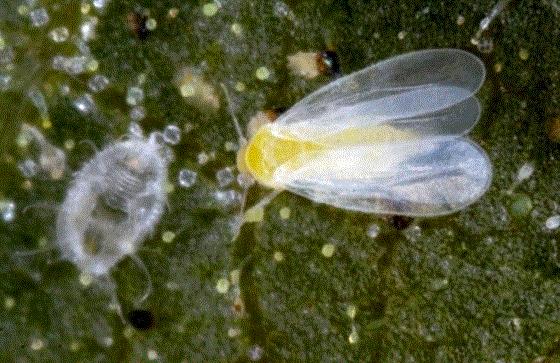
In CONTROLLING WHITEFLY ON POINSETTIA, JC reviewed best management practices for whitefly control, including scouting, understanding how different whitefly “biotypes” will influence your management decisions, insecticide rotation and understanding mode of action, biocontrol options for whitefly control and how to develop a practical management plan for your poinsettia crop.
Here are some of the topics he covered:
-
Insecticide rotation program for controlling whitefly on poinsettias
-
Biocontrol options for whitefly control on poinsettias
-
Different whitefly biotypes and how this affects management
-
Scouting
For even more on the topic from JC, check out WARDING OFF WHITEFLIES from GrowerTalks’ May 2021 issue.

Finish Line … Onboarding
Every discussion with greenhouse owners and managers these days includes comments about labor challenges—primarily, attracting and retaining good talent. I’ve been thinking a lot about this lately and had plenty of conversations related to labor with folks at greenhouse events. I tend to listen to their frustrations, then ask if they have any tactics that have worked.
One of the common themes that comes up when citing positive experiences revolves around processes related to onboarding. Basically, not just throwing a new employee to the wolves on their first morning, but actually helping weave them into the fabric and culture of the company. This looks different at each business, but it requires a clear strategy. Reading up on this, I continued to come across “the Cs of employee onboarding.” Sometimes there are three, but sometimes as many as four or five Cs (which I found humorous), and they include the following:
Clarity. Be sure all new hires have a clear understanding of their roles, responsibilities and how effectiveness is measured. When team members know these things, they feel more secure and focused.
Compliance. There are legal and policy frameworks in place at all business and these must be communicated clearly and in writing.
Culture. This is tough but critical. Share your business’s values, social norms and expectations for being part of the team. If you want to keep employees long-term, culture is probably the most important piece of the puzzle.
Connection. Setting new employees up with a mentor is always a good idea. Building professional relationships within a company drives loyalty and creates accountability for all parties. When a new team member feels like they “belong,” teamwork becomes a priority to them.
Check-in. Once all of the above Cs are in place, continue revisiting each one and establish an ongoing dialogue. Don’t abandon the new team member! Continuous engagement leads to a smooth transition and long-term success.
Hope this spurs some discussion! Until next week …


Please feel free to send your comments, constructive criticism and topic ideas to me at bcalkins@ballhort.com.

Bill Calkins
Editor - Tech On Demand
This email was received by you and 25,736 other fine subscribers!
If you're interested in advertising in Tech On Demand, contact Kim Brown ASAP and she'll hook you up.